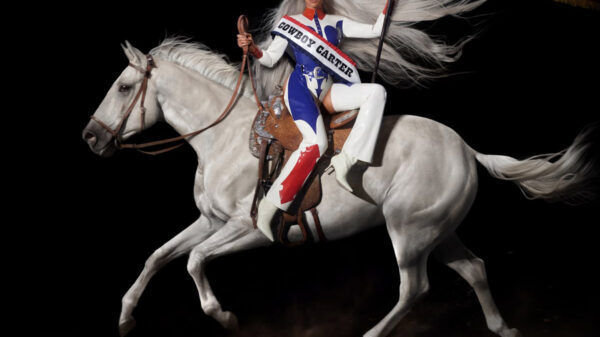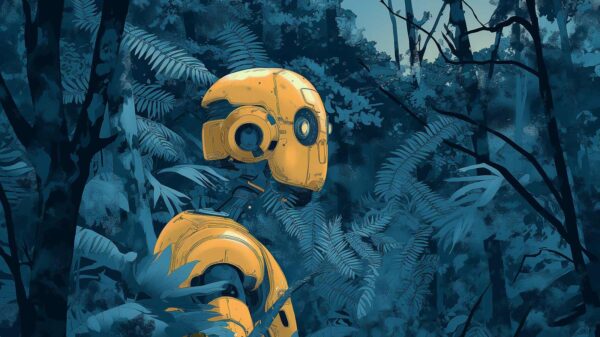Warning: this article contains spoilers
“Progress! What progress? You’ve removed the river. Destroyed nature. Driven the animals out!” said Snufkin to the park-keeper in Melody of Moominvalley.
The recent release of the video game Snufkin: Melody of Moominvalley marks a continued rise in video games engaging with the climate and ecological crises. However, unlike other games, the plot of Melody of Moominvalley, as mentioned in the trailer, is “about restoring harmony with nature”.
The story begins with Snufkin leaving Moomintroll during his winter hibernation. Snufkin returns in the spring to find an absence of animals (and ones that have remained are frightened or actively fleeing), a dried-up river and sporadic patches of deforested woodland. It becomes clear early on that something is not right with Moominvalley.
Restoring harmony with nature against exploitative forces is key to the game play and narrative. The Moomin’s hibernation patterns have been exploited, with construction and deforestation taking place while they are asleep for winter. Indeed, as the game progresses, players discover that the river has been dammed to support the irrigation of newly constructed parks across the valley. This initiative has been commissioned and enforced by another Moomin, the park-keeper, who has grand visions of what progress should look like.
Throughout the game, players must help Snufkin navigate and raise his inspiration level – similar to “experience points” or XP in other games – to complete tasks. Inspiration is raised by engaging with nature, by running through bushes or playing music for animals, for example. This mechanism intentionally makes the players interact with nature to release Moominvalley from the exploitative park-keeper.
The Two Main Themes of Snufkin
Two themes run throughout Melody of Moominvalley and represent the challenges associated with the dominant ways in which our nature connection is understood in the west.
First, the idea that nature will find its own harmony and ecological balance without major human interference runs throughout Moomin history. This is demonstrated by the long success that the Moomins and animals have had co-existing in Moominvalley before the park-keeper became involved.
Much like prominent environmental activist groups have often proclaimed, humans (or in this case, Anglo-centric capitalist Moomins) appear to be the main problem. Throughout the game, each park must be destroyed by Snufkin and then a cutscene (an extra video that pops up) shows the flourishing of diverse trees and flowers. This implies that removing human interference heals nature.
The plot also neatly demonstrates how competing visions of desirable futures are embedded in the making and shaping of our daily lives and relationships with nature. The park-keeper believed that what he was doing was right for Moominvalley. It is not until the end of the game that he realises the value of living in harmony and balance with nature. His perspective shifts significantly.
While playing as Snufkin, a human, we as players are encouraged to reflect on our own relationship with nature. Snufkin’s wandering characteristics and ecocentric tendencies lead him to restore nature for no reason other than the intrinsic beauty and balance of Moominvalley and its inhabitants. We believe this contrasts with the usual extraction, command and control of nature that other games, such as Sid Meier’s Civilization VI or the Fallout series, often portray.
Framing in video games can play a crucial role in helping us recognise the value of nature and question our existing relationships with the ecological world – rather than just simplifying the challenge we are facing.
In Snufkin: Melody of Moominvalley, nature, music and the arts are sources of inspiration, cultivating perspectives that support a more attentive, compassionate and responsible relationship with nature as demonstrated through Snufkin’s intentions and then later on the park-keepers change of heart.
Another game Abzu makes us engage with underwater life and its exploitation by technology – ironically, while playing as a robot. Unlike Melody of Moominvalley, it takes us beyond the simplistic statement that humans should not interfere with nature or that technology is bad for the environment. Instead, it tries to show us that the problem mostly lies in the characterisation of this relationship.
In 2019, Alenda Chang outlined in her book Playing Nature: Ecology in Video Games the many ways that video games – through future-making, attention to scale and non-human perspectives, for example – are supporting us to engage more fruitfully with ecological challenges and critique. Video games can and are connecting people to the potential of eco-recovery.
Snufkin: Melody of Moominvalley does simplify the complex politics of nature recovery. You can destroy a park and nature is easily restored, but there is much merit in how this is a core focus of the game’s narrative. Our challenging relationships with nature are becoming more mainstream in social and cultural arenas through video games. There’s a lot of promise in using video games to illuminate and illustrate the complex challenges of our climate and ecological change.
Written by Elliot Honeybun-Arnolda, Senior Research Associate, Environmental Sciences, University of East Anglia and Lucas Friche, PhD Candidate, Communication Studies, Université de Lorraine
This article is republished from The Conversation under a Creative Commons license. Read the original article.
![]()
5 Ways to Support HipHopCanada:
- Submit Your Music
- Follow Canadian Fresh (HipHopCanada’s Spotify Playlist)
- Follow us on Instagram
- Follow us on X (Twitter)
- Like us on Facebook



















































